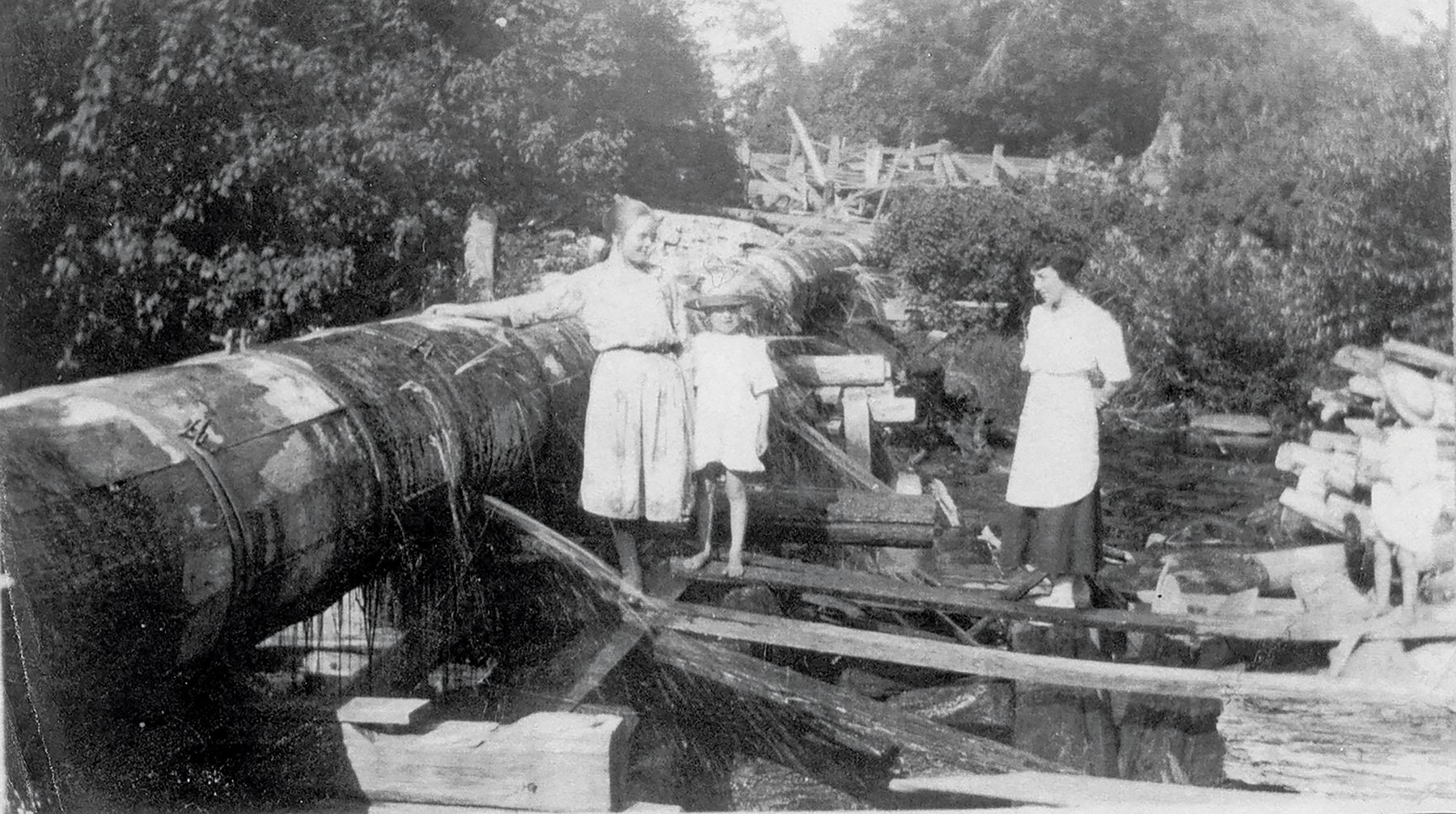
This photo, taken circa 1918, shows Clara Short, Agnes Collins and Agnes’ sons Gordon and Aubrey at “the flume,” which stretched from the Kolapore Dam on Kolapore Creek to the sawmill owned by Agnes’ husband, Charlie Collins. This was likely a regular outing for the group – Clara Short, a teacher at the local Kolapore school, boarded with the Collins family, and young Gordon Collins became one of her favourite pupils.
The wooden flume carried water from the dam to a water wheel that powered the mill. Charlie Collins had purchased the property, dam, flume, water wheel and shingle mill from his father, James, in 1914. He later sold the mill and dam to Ed McKean in 1924, but continued to be successful in the lumber business, putting his three children through university and remaining a pillar of the community. Sons Gordon and Aubrey became a dentist and a pharmacist respectively, and daughter Marion (not pictured) had a career as a dental nurse.
Settlement of the area had begun in the 1870s. Originally called Paradise, the name was changed to Kolapore in 1884 and before long, the community boasted a school, post office, general store, stone quarry, lime kiln, and several sawmills thanks to the area’s vast hardwood forests. By the early 1900s there were more than 10 mills operating in the Kolapore area, cutting trees into shingles, lumber and squared timbers to be used in building locally and in the rapidly growing towns of Thornbury and Collingwood nearby.
Few remnants of the original village and industry have survived, and today Kolapore is known mainly as a popular spot for backcountry hiking, mountain biking and cross-country skiing. ❧
Sources: The Blue Mountains Public Library; Kolapore Remembered, by Bill Milne, 2004; Town of The Blue Mountains Then & Now History Project.











